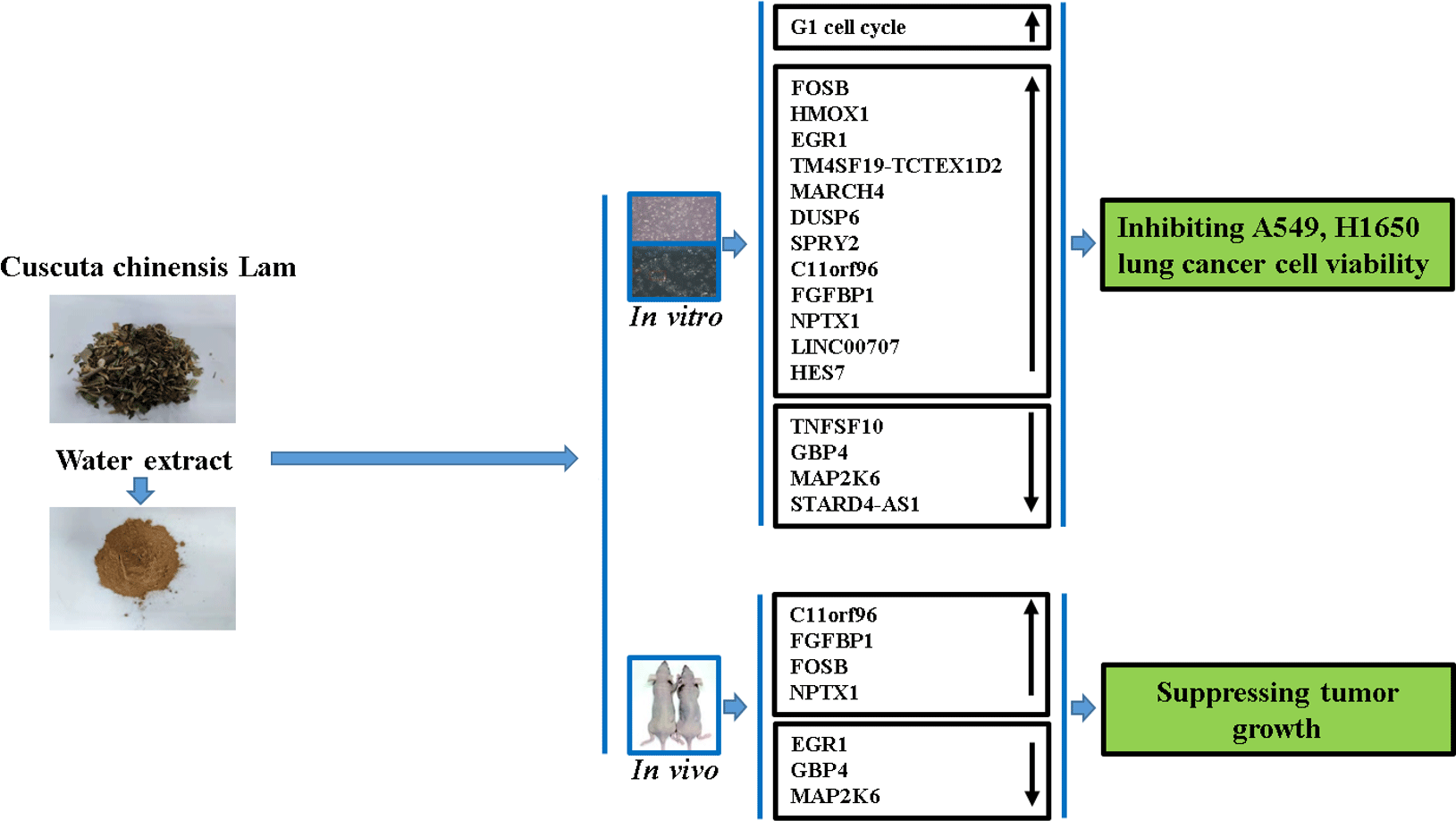No CrossRef data available.
Article contents
An RNA-seq transcriptome analysis for investigating the anti-lung cancer activity of medicinal Cuscuta chinensis Lam plant
Published online by Cambridge University Press: 05 December 2022
Abstract

Cuscuta chinensis Lam. is a traditional medicinal herb used to treat female sterility and male reproductive system disorders. However, the anti-lung cancer properties of Cuscuta chinensis Lam. and possible molecular mechanisms have yet to be explored. Thus, the study’s main purpose was to evaluate in vitro and in vivo anti-lung cancer properties of C. chinensis water extract (CLW) in human lung adenocarcinomas and the underlying molecular mechanism involved. Our results demonstrated that CLW caused a significant inhibition of cell viability and induced G1 cycle arrest in lung cancer cells. Furthermore, RNA-seq transcriptome analysis revealed 602 common genes with a significant expression in A549 and H1650 cells under CLW treatment. Functional enrichment analysis suggested that these common genes regulated by CLW mainly involve lung cancer cell proliferation, metastases and apoptosis processes. In addition, forty-six common genes (> 2-fold change) regulated by CLW in A549 and H1650 cells were selected for further validation. In vitro quantitative real-time PCR results confirmed that twelve genes were up-regulated, and four genes were down-regulated in A549 and H1650 cells. The in vivo experiment demonstrated CLW could significantly decrease tumour volume and tumour weight of mice compared with the control group. Moreover, in vivo quantitative real-time PCR results revealed that C11orf96, FGFBP1, FOSB and NPTX1 genes were up-regulated and EGR1, GBP4 and MAP2K6 genes were down-regulated in tumour tissues compared with the control group. These data strongly suggest that CLW could be developed as an efficacious drug for lung cancer treatment.
- Type
- Research Article
- Information
- Copyright
- © The Author(s), 2022. Published by Cambridge University Press on behalf of The Nutrition Society





